A WISE WISH?
Plants, All Plants, Love it Here
You’ve got to be careful what you wish for. Nonetheless, the naturally rich, well-drained but moisture retentive soil here has made me, especially this season of abundant rainfall, heat, and sunlight — okay I’ll say it, wish I was gardening on poor soil. Then I could earmark my cultivated plants for compost, fertilizer, and other goodies that make for good soil. Weeds, except those that made their way beneath the limited areas beneath these plants, would languish.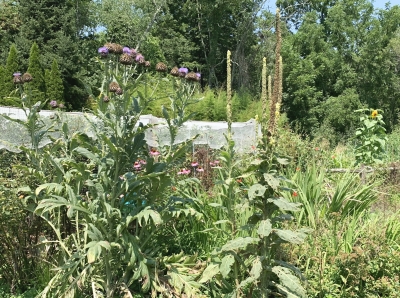 The naturally excellent soil here is weed heaven. Seems if I turn my back for a day, these interlopers, which stand waiting from outposts in field and woods, jump forward in among my cultivated plants. Quackgrass moves stealthily in from garden edges, pushing its pointy runners underground. Thistles pop up from lateral root and seeds. Bindweed is relentless in its persistence though, for some reason, hasn’t joined thistles in repeatedly invading the same bed. For now, each kind of weed has preferred territories it’s trying to claim. Or maybe, they’ll soon all be invading everywhere at once.
The naturally excellent soil here is weed heaven. Seems if I turn my back for a day, these interlopers, which stand waiting from outposts in field and woods, jump forward in among my cultivated plants. Quackgrass moves stealthily in from garden edges, pushing its pointy runners underground. Thistles pop up from lateral root and seeds. Bindweed is relentless in its persistence though, for some reason, hasn’t joined thistles in repeatedly invading the same bed. For now, each kind of weed has preferred territories it’s trying to claim. Or maybe, they’ll soon all be invading everywhere at once.
Creeping charlie, of course, tries to gain foothold, but it’s all aboveground except for shallow roots. This plant is easily and satisfyingly pulled in handfuls.
Even crocosmia, which I tried so hard to grow here years ago, has found it’s stride here. Global warming has helped; I used to dig up the corms for storage at the end of each growing season. Now I see the gracefully curving heads of fire-engine, red flowers peering up above other plants almost everywhere, even though I’ve never seen seeds form. (Admittedly, I haven’t looked closely.) My tack now is to yank out plants with a jerk wherever they become too numerous. Still, they seem to keep one step ahead of me.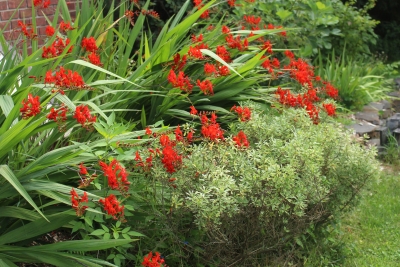
What Is Poor Soil?
When I began writing this post, I was in Olympia, Washington, visiting a friend who, along with her husband, tend their own farmden. Their small vegetable garden would hardly qualify their spread as a farmden, but the whole place is elevated to farmden status by a wide array of fruit trees and bushes, herb and flower gardens, two pigs, extensive woods and fields, and the DIY spirit of the place.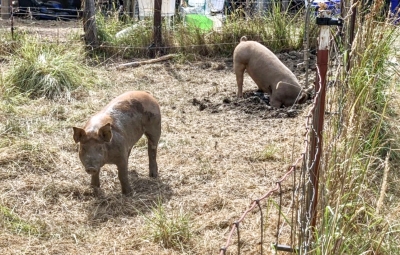
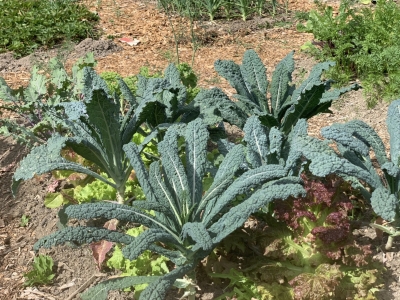
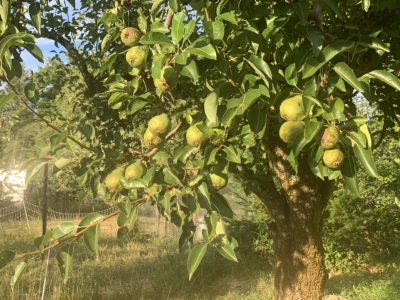
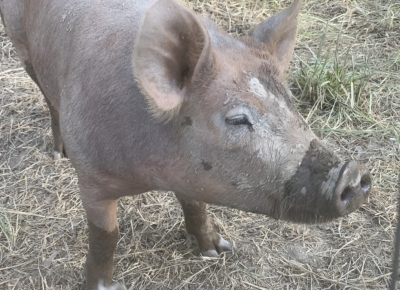
As I lent a hand in the garden with some weeding, mostly quackgrass (an old friend), I’m retracting my wish for poor soil — with the claim that it was never officially logged in wherever such wishes are made.
My friend warned me that her soil was poor, but poor soil can mean many things. I guess my wish (had I officially made it) was for soil that was poor in nutrients, even organic matter.
What I would not wish for would be poorly drained soil, which the soil on this Olympia farmland was. My friend was bemoaning her poor, clayey ground so I decided to investigate further, looking up a more detailed description of the soil on the “Web Soil Survey” (https://websoilsurvey.nrcs.usda.gov/app/).
The soil is actually a Skipopa silt loam, part of the, quoting the Survey, “Skipopa series [which] consists of very deep, somewhat poorly drained soils . . . used mainly as hayland and pastureland. If adequately drained . . . is also suited to climatically adapted cultivated crops. It is also used as woodland and homesites . . . The main limitation for hay and pasture is the perched water table . . . In summer supplemental irrigation is required for maximum production. Sprinkler irrigation is the most suitable method of applying water.”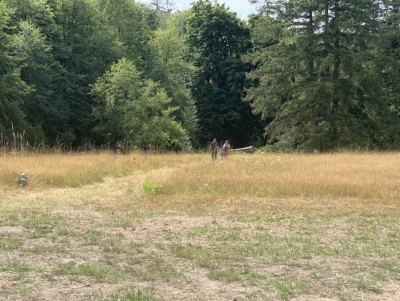
If Only . . .
The ability for water to drain through and out of a soil is the first thing I check in soil quality. Roots “breathe,” so need oxygen, ceasing to function of they are gasping for breath. Throw all the fertilizer you want on a plant in waterlogged soil and it won’t grow well.
My Olympia farmdening friends have two options for improving soil drainage. One workaround is to simply lower the water table, draining the water away to lower ground via open ditches or buried, perforated plastic pipes. The deeper the ditch or drain pipe, the greater the resulting depth of well-aerated soil; an eighteen inch depth would be the minimum needed. A large area would need a connected network of pipes. A gradual slope along the length of any ditch, about a half foot per hundred feet, keeps water within flowing downhill. (The local NRCS office of the USDA can help design such a system.)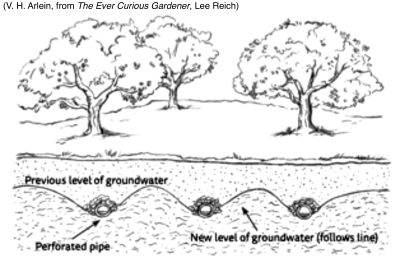
Instead of lowering the water table, plants’ roots can be raised above the water table to rescue them from seasonal drowning. Either raised beds or wide mounds work well, the former more useful for vegetables and flowers, the latter more so for trees and shrubs.
Poor drainage also results from a soil that is too “tight” to let water pass through it. In some Western soils, excessive sodium is the cause. Washing away that sodium with calcium, from gypsum, is one cure for that. And even when drainage is corrected, a soil might need other help.
If I were so lucky to be blessed with Skipopa soil, once I took care of the poor drainage, I would beef up and maintain the ground beneath vegetables, flowers, and other cultivated plants with mulches, compost, and cover crops.
Unfortunately for me, in my present situation, it’s much easier to make a poor soil good than a good soil poor. On a garden or farmden scale, at least.


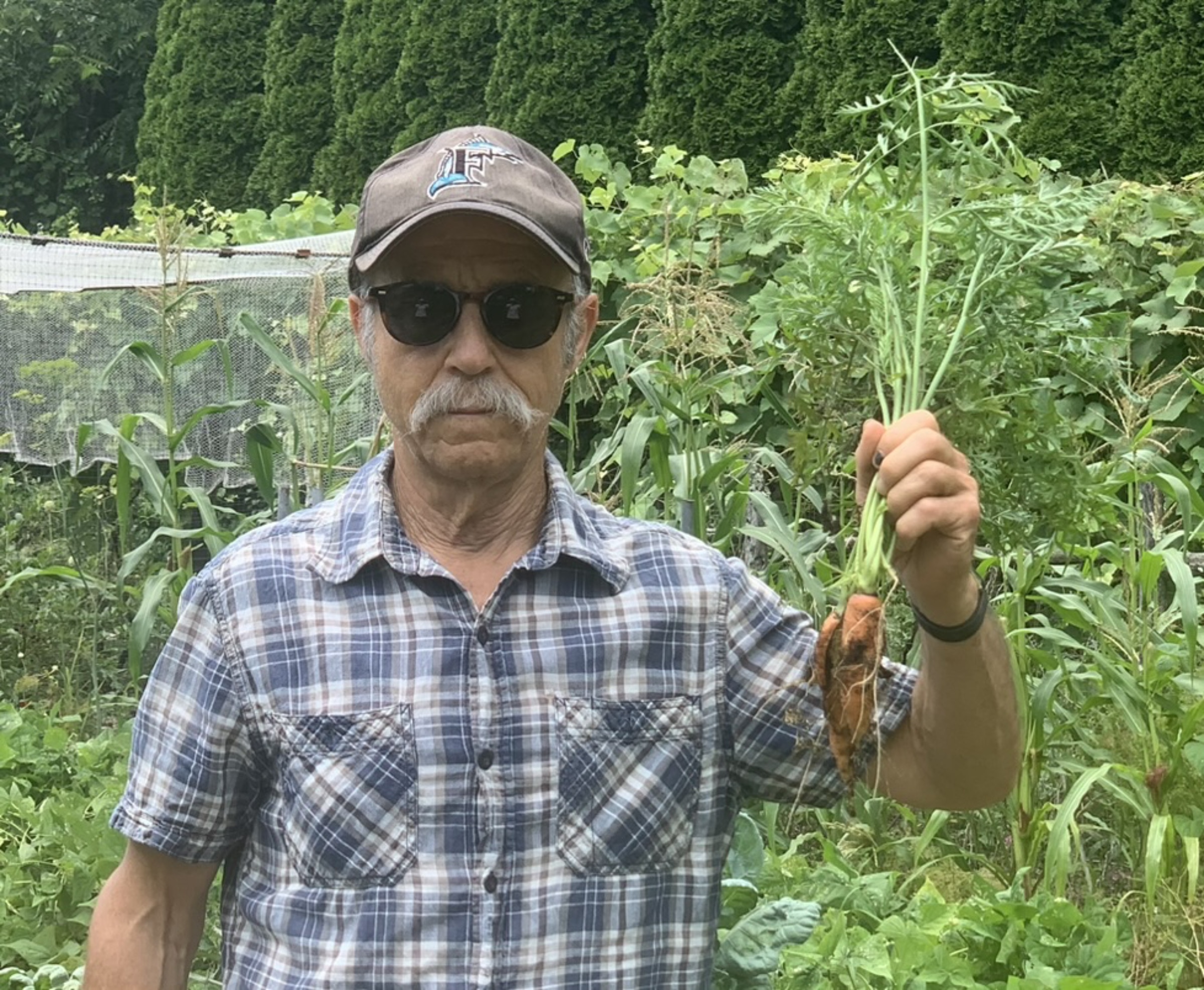
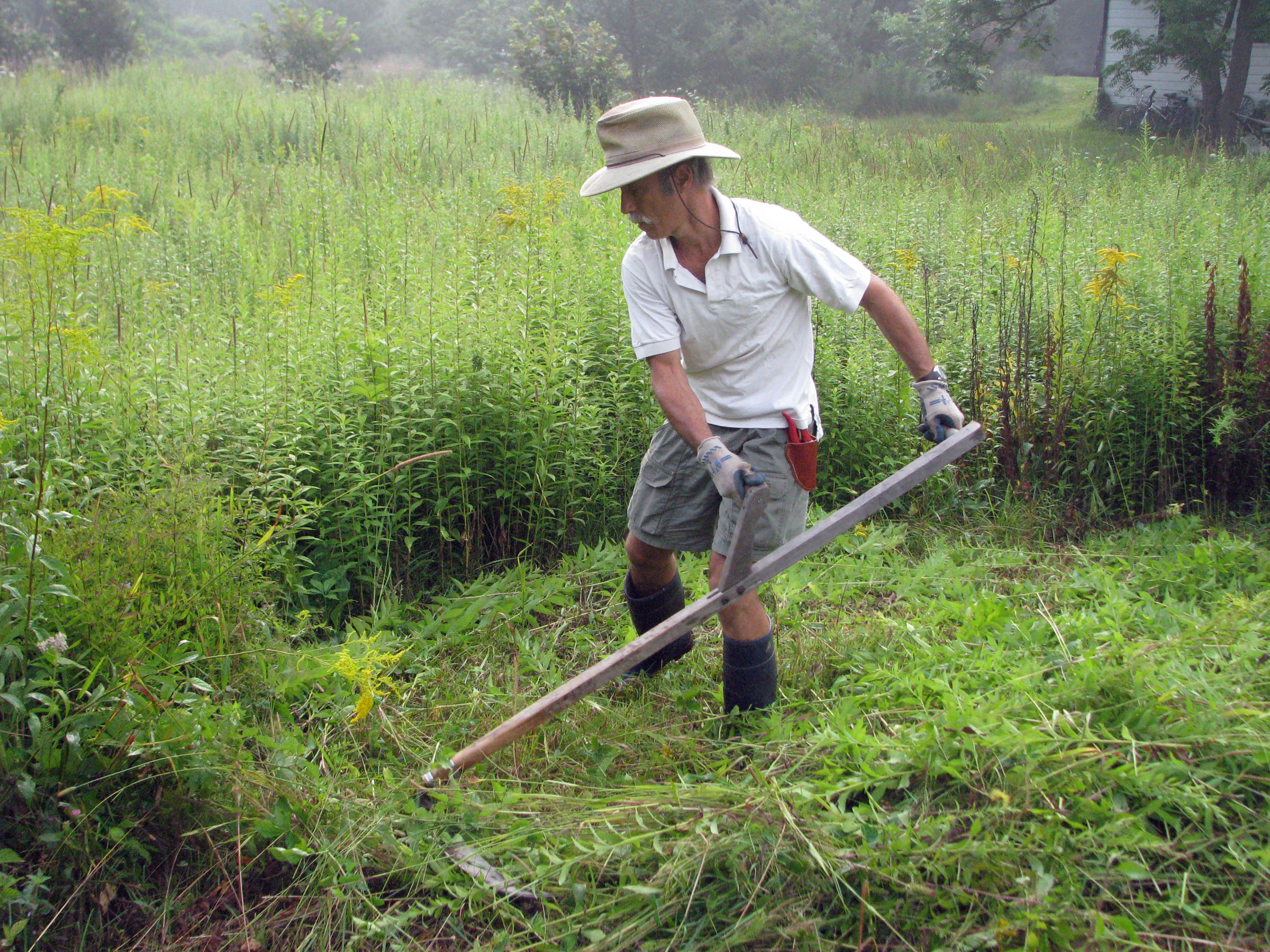
thanks alot of information
Hi, Lee
I am discovering that soil around red and black currants that I started to grow from the cuts you gave to me isn’t draining well. What can I add into the soil surrounding these young bushes to increase the soil’s drainage ability?
Thank you.
Mulches will eventually, but slowly improve drainage if the cause is too much mismanaged clay. If the cause is a high water table, you need to lower the water table by draining away water via a ditch or perforated pipe to a lower area. A long shot would be mulchs piled high among the stems, which would thenn root higher up. Perhaps the best course would be to dig them up to replant in welll drained soil.
This is such an interesting topic for me. I garden on clay/shale and am planning my vegetable garden for next year. I have decided to build raised beds for the vegetables but also want to grow flowers and step-over fruit trees as well as soft fruit in the perimeter beds surrounding those raised beds. It was recommended to me to use either lime or gypsum to break up the clay soil. Since I have at least 9 months before I will start planting, I was wondering if you agree with the gypsum advice and, if so, how fast working this would be.
Very grateful for your advice!
Cheers,
Marianne
Gypsum is used to “open up” soils that are high in sodium, such as some of those in the western part of our country. The calcium in gypsum, with the help of copious amount of water, replaces sodium, which is leached out. Gypsum won’t loosen up soils that are not high in sodium. The best thing, in that case, is to add plenty of organic matter to the ground, even digging it in. Sawdust or wood shavings are good, long-lasting sources but you have to also add a nitrogen fertilizer to offset the temporary tie-up of nitrogen by microorganisms. I delve into this in greater detail in my book THE EVER CURIOUS GARDENER.
Thanks! The book has been ordered and is on its way!
Cheers,
Marianne